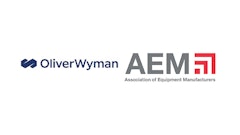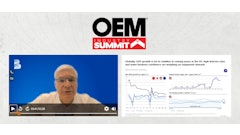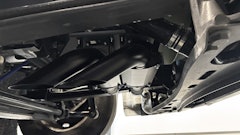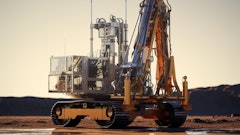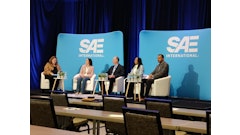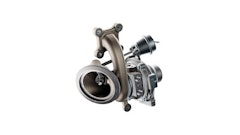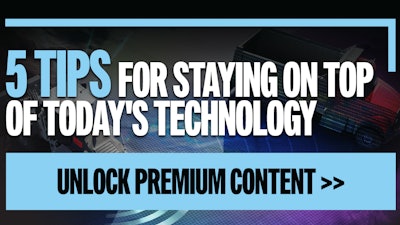
DOWNLOAD THE PDF *Save to your desktop for easy reading & reference
The Association of Equipment Manufacturers (AEM) notes that with the rapid evolution of technologies used on jobsite equipment to meet the ever-changing needs of construction professionals, the industry must find ways to adopt them to be successful. The following five steps can help product design teams at OEMs understand and build a strategy for staying on top of the technology that’s driving the on- and off-highway mobile equipment trends.
In a CONEXPO-CON/AGG 2023 educational session, Jason Anetsberger of Komatsu shared that digitization, for example, allows the industry to integrate technology and product offerings to provide customers with real-time, data-driven guidance. While automation, for example, has long been in use across several industries, many tech capabilities continue to be siloed, Anetsberger said. As OEMs incorporate newer technology trends into traditional processes to improve project efficiency, these components must work in tandem to provide value to the end user.
Log in to view the full article
DOWNLOAD THE PDF *Save to your desktop for easy reading & reference
INTRODUCTION
The Association of Equipment Manufacturers (AEM) notes that with the rapid evolution of technologies used on jobsite equipment to meet the ever-changing needs of construction professionals, the industry must find ways to adopt them to be successful. The following five steps can help product design teams at OEMs understand and build a strategy for staying on top of the technology that’s driving the on- and off-highway mobile equipment trends.
- Grasp Today's Technology
- Invest in Innovation
- Think for the Future
- Understand the Tides of Technology
- Study the Trends & Stay Up to Date
GRASP TODAY'S TECHNOLOGY
In a CONEXPO-CON/AGG 2023 educational session, Jason Anetsberger of Komatsu shared that digitization, for example, allows the industry to integrate technology and product offerings to provide customers with real-time, data-driven guidance. While automation, for example, has long been in use across several industries, many tech capabilities continue to be siloed, Anetsberger said. As OEMs incorporate newer technology trends into traditional processes to improve project efficiency, these components must work in tandem to provide value to the end user.
“It’s critically important that recorded data and automated parts are able to work together,” Anetsberger said. “Automation empowers safer and more optimized jobsites by leveraging increasingly automated equipment and processes. Automated vehicles have been in use for decades in mining.” AEM indicates that in the future, the construction industry will work toward achieving a jobsite in which digital tasks are created from the optimal construction plan, and autonomy works in harmony with the machinery on a jobsite.
So much of what is used on a jobsite currently collects information from telematics to terrain data, AEM noted.
INVEST IN INNOVATION
Dr. Wilfried Aulbur, senior partner, Roland Berger, noted that new technology adoption is driven by total cost of ownership (TCO) advantages, regulatory pressure and customer pull.
Switching from a standard hydrocarbon-based propulsion to electric vehicles depends significantly on use case. Regulations in several cities across the globe are now moving toward requiring construction equipment to be zero emission vehicle (ZEV) within a few years.
Aulbur said it would be advisable for today’s contractors to start integrating some ZEV mini excavators into their fleets.
“[End users should] start by experiencing electric operations and understanding the impact on [their] use case, as well as the required infrastructure — such as charging — needed to operate the equipment successfully today so [they] can be fully operational when regulations come into effect,” he added.
Aulbur noted electrification in underground mining has been common for some time, as the cost of ventilation is very high and overcompensates the cost of electrified powertrains.
OEMs should always invest in technologies that add value to machines, noted Peter Bleday, head of autonomy at Danfoss Power Solutions.
Technology that brings to the market differentiated value that a customer recognizes and will pay for is worth immediate exploration, he added.
THINK FOR THE FUTURE
It’s important to build strong relationships with suppliers to gain valuable insight into emerging technologies and how to integrate them into an existing operation.
“This helps [to understand] the challenges and opportunities of emerging technologies as well as how they may be applicable to your own use cases,” says Aulbur. “We’ve seen fleets working together with their suppliers to develop sustainable solutions that reduce operating costs in very challenging environments.”
Adam Livesay, Elevāt co-founder and chief commercial officer, noted “when you're investing in new technologies like IoT or telematics, the partnership with a company is as important, if not more important than the tech itself.”
Partnering with a supplier with which an OEM has a cultural fit ensures not only a better-connected machine, but also gives suppliers feedback on what they need to build with information and analytics that they're looking at providing and driving the supply chain, Livesay added.
“At any given time, my team and I are working with five to 15 OEMs, plus our own internal projects,” said Bleday, adding he’s seen 20 vehicles operating at Level 3 and Level 4 autonomy.
Through that experience and lessons learned, the company is well positioned to guide OEMs starting on their road to autonomy and can help them prevent costly mistakes, he added.
Participating in demonstrations and pilot projects before investing in new technology goes to the saying, ‘the proof is in the pudding,’ Aulbur noted.
“As every fleet’s operations are different, what matters is that equipment does not provide TCO and other benefits in principle but in practice,” he added.
“However, as we move to new sustainable powertrains, we must be aware that this is not a matter of simple lift and shift.”
Livesay said pilot projects can help demonstrate that the system is technically capable and can deliver on business objectives as well as lay the groundwork for how it will be released to the market and how dealers and end users will be educated on its use.
“Industry standards, benchmarking activities and organizations like the National Fluid Power Association and AEM do a good job of helping suppliers and OEMs know what is standard and what is available in the market,” said Bleday.
“OEMs have to stay on top of what their competition is doing, but also what their end users want. For a supplier, we have to lead that by about a year or 18 months, so we’re helping to set the benchmark to give a good idea of what is real and what's not.”
UNDERSTAND THE TIDES OF TECHNOLOGY
Organizations such as the Society of Automotive Engineers (SAE) provide opportunities to stay up to date on technologies impacting the mobility industry including technical papers, events, research reports and scholarly journals.
The role of using data in analyzing equipment performance, maintenance schedule optimization, reduced fuel consumption and enhanced equipment efficiency cannot be overstated, said Aulbur.
“Sensors, data, edge computing and cloud computing allow a completely different level of transparency regarding equipment performance and overall fleet operations,” he said, adding that the data is used to improve both equipment and fleet operations by understanding idle time and its root causes, leveraging preventive maintenance.
It’s also important to be aware of the impact of data governance of the new technologies, such as the General Data Protection Regulation (GDPR), a European Union regulation on information privacy, the California Consumer Privacy Act, and the Colorado Right to Repair Act, Livesay said.
Cybersecurity is of utmost importance, Aulbur said, adding that OEMs and software providers are acutely aware of the need to prevent machine hacking and hijacking, although it is unlikely breaches will be prevented all of the time.
Livesay’s company carries cybersecurity insurance.
“This is a rapidly evolving space and is as important as the technology itself,” he added.
Addressing the role of environmental regulations and sustainability in choosing OEM technology, all manufacturers must adhere to a complex web of environmental regulations at local, national and international levels designed to mitigate environmental impacts, reduce emissions and protect natural resources, Bleday noted.
“Compliance is not optional; it's a legal and ethical obligation,” he added. “Forward-thinking manufacturers go beyond compliance to achieve sustainability goals and contribute positively to the environment.”
That includes conducting a life-cycle assessment and evaluating the impact of a product or system from its production to its disposal, Bleday said.
A company should evaluate the ROI in technology through such factors as a cost-benefit analysis to ensure the technology aligns with business goals, such as increased productivity, safety and decreased downtime.
“At the end of the day, everything comes down to numbers,” Aulbur pointed out. “We have worked extensively with fleets to develop accurate TCO models for their operations to understand the impact on profitability while we invest in new technologies.
“Working this out not only provides a solid financial model regarding ROI and payback times, it also provides a structured way of integrating optimization initiatives like the changes in the operating model and to understand how they contribute to achieve TCO parity and beyond.”
“Some values are harder to calculate than others,” Bleday added. “Increased safety isn’t a clean calculation, even though insurance companies calculate it all the time. We've had OEMs talk to us about helping their customers lower their insurance premiums because we make the vehicle safer. Ultimately, a lot of these things can be calculated by understanding the value that the vehicle is bringing to the end user.”
STUDY THE TRENDS & STAY UP TO DATE
Industry professionals point out that attending trade shows and conferences, reading trade journals, joining associations, and adopting a continuous-learning mindset are all prime options for staying on top of technology. As trends in technology continue to shift alongside the infrastructure and regulations required to support their success, it’s important to keep a watchful eye on educational opportunities.
One such opportunity is OEM Off-Highway Magazine’s OEM Industry Summit. The three-day event, shaped specifically for engineers and product development teams, offers insight from industry experts on a range of topics from electrification to automation and operator environment. Occurring annually, this event brings together some of the industry’s most knowledgeable experts to present on the latest industry trends and technologies. Registration is free at https://www.oemsummit.com/.
Aulbur noted the industry is undergoing significant change in the on- and off-highway industry and as such, “our business models and processes will have to change to adapt to new powertrains, different data-driven business models, regulatory changes and customer expectations.
“In this environment, understanding current best practices and future opportunities as well as challenges is key to running a profitable and successful business, not only today but also tomorrow,” he said.
DOWNLOAD THE PDF *Save to your desktop for easy reading & reference

